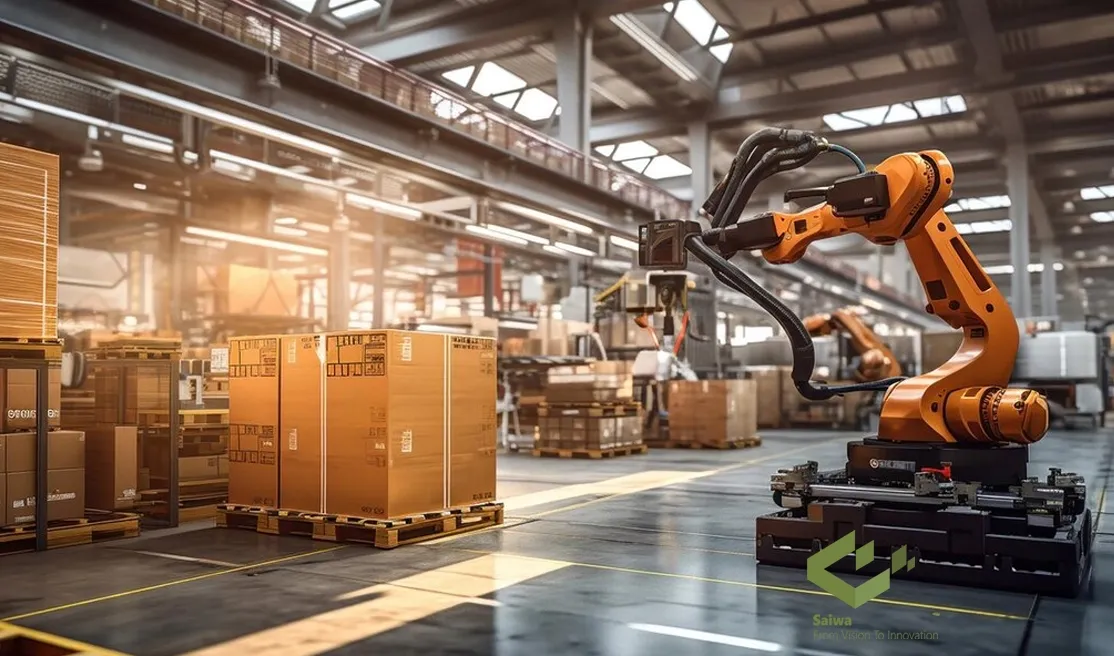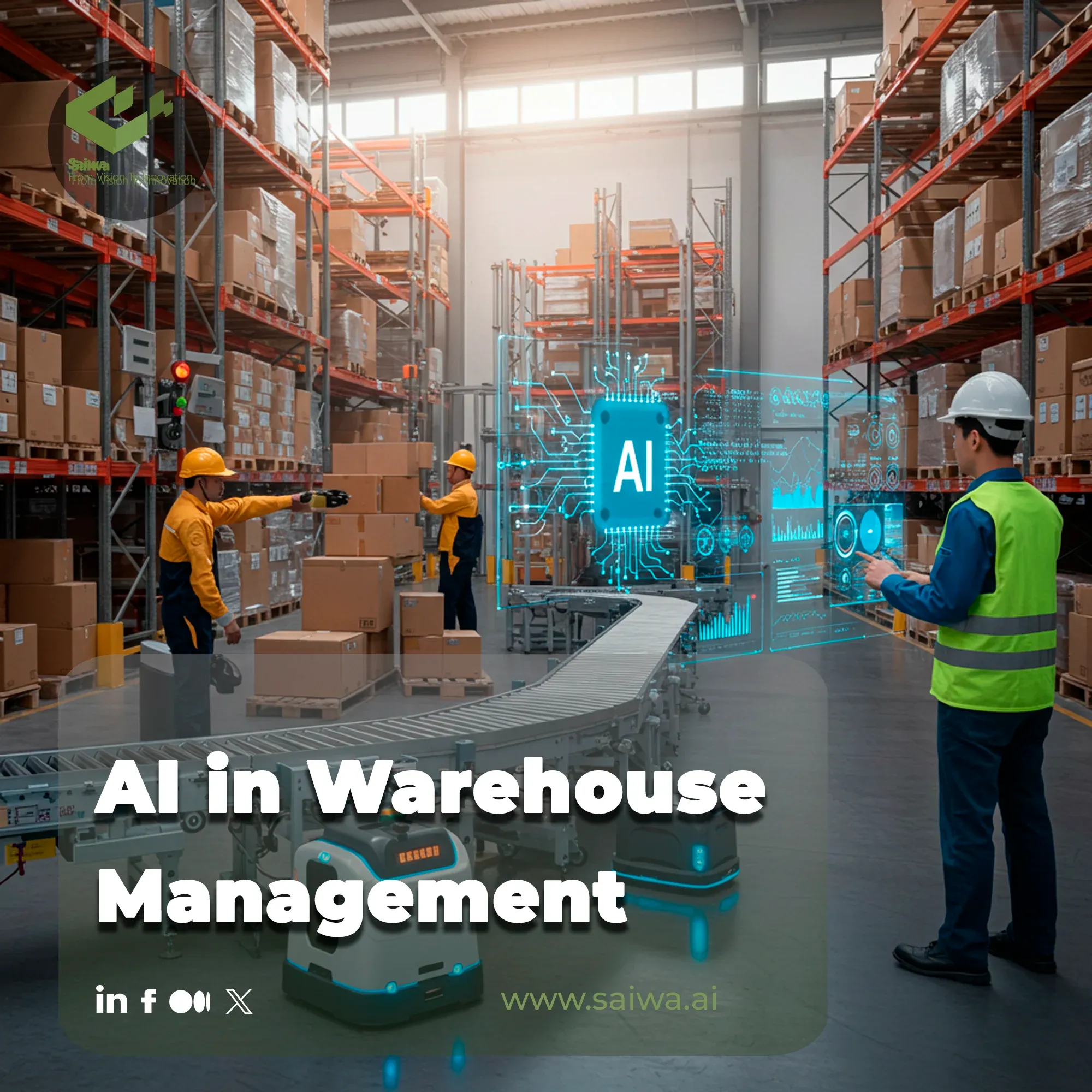Warehouse management has become a critical component of modern supply chains, especially with the rise of e-commerce and the increasing demand for faster, more efficient deliveries. As consumers expect shorter delivery times and more accurate inventory tracking, traditional warehouse management systems (WMS) often fall short. As a result, companies are seeking advanced technologies that can optimize inventory, streamline operations, and improve overall efficiency to ensure they remain competitive in a rapidly evolving marketplace.
Saiwa is a company that provides AI-driven solutions to help businesses optimize their operations. Through its platform of AI as a Service (AIaaS) and machine learning tools, Saiwa empowers businesses to improve operational efficiency and minimize downtime. As industries continue to integrate AI technologies, solutions like those offered by Saiwa can enable businesses to improve their processes, contributing to better decision making and increased productivity.
This article will explore how AI is being applied to warehouse management, focusing on the technologies that are transforming the industry, their benefits, and the future trends that are shaping the way warehouses operate. It will provide insights into how companies can leverage AI to optimize their operations and stay ahead of the competition.
AI in Warehouse Management: How is It Applied?
AI's application in warehouse management encompasses a range of technologies, each addressing specific operational challenges. These technologies work synergistically to create a more intelligent and adaptive warehouse environment, optimizing various aspects of warehouse operations, from inventory management and order fulfillment to resource allocation and predictive maintenance. The integration of AI empowers warehouses to become more efficient, responsive, and cost-effective.

Machine Learning for Predictive Analytics
Machine learning (ML), a subset of AI, plays a crucial role in predictive analytics within warehouse management. By analyzing historical data, such as sales trends, seasonal demand fluctuations, and even weather patterns, ML algorithms can forecast future demand with remarkable accuracy.
This allows warehouse managers to optimize inventory levels, proactively address potential stockouts, and minimize the risk of overstocking. Predictive analytics also extends to optimizing storage locations based on predicted demand, minimizing travel time for picking and packing operations, and improving overall warehouse layout efficiency. Furthermore, ML can predict potential equipment failures, enabling proactive maintenance and reducing downtime.
Computer Vision in Inventory Management
Computer vision empowers warehouse systems to "see" and interpret their surroundings. Cameras equipped with computer vision algorithms can automatically identify and count items, detect damage, and even verify product authenticity.
This eliminates the need for manual inventory checks, reducing labor costs and improving accuracy. Computer vision also facilitates automated picking and packing processes, guiding robots or human workers to the correct locations and ensuring the right items are selected.
It can also be used for real-time monitoring of warehouse conditions, identifying potential safety hazards and optimizing space utilization. By automating these visually intensive tasks, computer vision significantly enhances efficiency and reduces errors.
Robotics and Automation
Robotics and automation are integral to AI-driven warehouse management. Automated Guided Vehicles (AGVs) and Autonomous Mobile Robots (AMRs) navigate the warehouse floor, transporting goods, and assisting with picking and packing tasks.
Robotic arms automate repetitive tasks such as palletizing and depalletizing, freeing up human workers for more complex and value-added activities. The integration of robotics and AI significantly increases throughput, reduces errors, and improves overall warehouse efficiency. Moreover, robots can operate 24/7, increasing productivity and reducing reliance on human labor. AI-powered robots can also learn and adapt to changing warehouse environments, further optimizing their performance over time.
Applications of AI in Warehouse Management
The practical applications of AI in warehouse management are diverse and far-reaching, impacting various aspects of warehouse operations and contributing to significant improvements in efficiency, accuracy, and cost-effectiveness.
Predictive Maintenance for Operational Continuity
AI in predictive maintenance analyzes sensor data from warehouse equipment, such as conveyor belts, forklifts, and sorting systems, to predict potential failures. This allows for proactive maintenance scheduling, minimizing downtime and preventing costly disruptions to operations.
By identifying potential issues before they occur, predictive maintenance extends the lifespan of equipment and optimizes maintenance budgets. This proactive approach minimizes repair costs and ensures smooth warehouse operations. Predictive maintenance also improves safety by identifying potential hazards before they cause accidents.
Streamlined Order Fulfillment with AI Algorithms
AI algorithms optimize order fulfillment processes by determining the most efficient picking routes, prioritizing urgent orders, and even suggesting optimal packaging configurations. This streamlines the entire fulfillment process, reducing order processing time and improving customer satisfaction.
AI-powered systems can also dynamically adjust to changing order volumes and prioritize tasks based on real-time demand. This dynamic optimization ensures that orders are processed quickly and efficiently, even during peak periods. AI can also personalize the fulfillment process, tailoring packaging and delivery options to individual customer preferences.
Robotics and Automation for Efficient Material Handling
As mentioned earlier, robotics and automation play a critical role in material handling within the warehouse. Robots automate tasks such as picking, packing, sorting, and transporting goods, significantly improving efficiency and reducing labor costs.
The integration of AI allows these robots to adapt to changing warehouse layouts and optimize their movements for maximum throughput. AI-powered robots can also collaborate with human workers, enhancing productivity and safety. Furthermore, robots can handle hazardous materials, reducing the risk of workplace injuries.

Real-time Visibility and Asset Tracking
Real-time visibility: AI-powered systems provide real-time visibility into warehouse operations, allowing managers to monitor inventory levels, track the movement of goods, and identify bottlenecks in the process. This real-time insight enables proactive decision-making and facilitates rapid response to unexpected events. Real-time visibility also improves communication and collaboration between different teams within the warehouse.
Inventory demand forecasts: AI algorithms analyze historical sales data, market trends, and other relevant factors to generate accurate inventory demand forecasts. This helps optimize inventory levels, preventing stockouts and minimizing carrying costs. Accurate demand forecasting also enables businesses to make informed purchasing decisions and negotiate better prices with suppliers. This improves overall supply chain efficiency and reduces the risk of lost sales due to stockouts.
Seamless Integration with IoT
AI seamlessly integrates with the Internet of Things (IoT), leveraging data from connected sensors and devices throughout the warehouse. This provides a comprehensive view of warehouse operations, enabling real-time monitoring, predictive analytics, and automated decision-making. The combination of AI and IoT creates a truly intelligent and interconnected warehouse environment.
Benefits of AI in Warehouse Management
The implementation of AI in warehouse management offers a multitude of benefits, driving significant improvements in efficiency, accuracy, and cost-effectiveness. These benefits contribute to a more streamlined and responsive warehouse operation, enabling businesses to meet the increasing demands of today's dynamic supply chain landscape. AI empowers warehouses to optimize resource allocation, improve decision-making, and enhance overall productivity.
Enhanced Operational Efficiency
AI streamlines warehouse processes, automating repetitive tasks and optimizing workflows for maximum efficiency. This includes optimizing picking routes, automating inventory replenishment, and streamlining receiving and shipping processes. By automating these tasks, AI frees up human workers to focus on more complex and value-added activities. The result is a faster, more efficient, and more productive warehouse operation.
Improved Accuracy and Reduced Errors
Automation minimizes human error, leading to improved inventory accuracy and reduced order fulfillment mistakes. AI-powered systems can accurately track inventory levels, ensuring that the right products are in the right place at the right time. This reduces the risk of stockouts, overstocking, and costly shipping errors. Improved accuracy also leads to increased customer satisfaction and enhanced brand reputation.
Cost Reduction and Resource Optimization
AI optimizes resource allocation, reducing labor costs, minimizing waste, and improving overall cost-effectiveness. By automating tasks and optimizing workflows, AI reduces the need for manual labor, resulting in significant cost savings. AI also optimizes energy consumption, reduces waste through efficient inventory management, and streamlines logistics.
Scalability and Flexibility
AI-powered systems can easily adapt to changing business needs and scale to accommodate fluctuating demand. This flexibility is crucial in today's dynamic market, where businesses must be able to respond quickly to changes in customer demand and market conditions. AI enables warehouses to scale their operations up or down as needed, ensuring optimal efficiency and cost-effectiveness.

Future Trends in AI Warehouse Management
The future of AI in warehouse management is bright, with several exciting trends on the horizon that promise to further revolutionize warehouse operations. These trends include advancements in robotics, computer vision, and blockchain technology.
Staying abreast of these trends will be crucial for businesses seeking to maintain a competitive edge in the evolving landscape of warehouse management.
Adoption of Autonomous Mobile Robots (AMRs)
AMRs are becoming increasingly sophisticated, capable of navigating complex warehouse environments and performing a wider range of tasks. They are equipped with advanced sensors and navigation systems that allow them to operate autonomously, without the need for human intervention. AMRs can significantly improve efficiency in tasks such as picking, packing, and transporting goods.
Advancements in Computer Vision for Quality Control
Computer vision technology is evolving rapidly, enabling more accurate and efficient quality control processes. Computer vision systems can detect defects, identify damaged goods, and verify product authenticity with greater precision than human inspectors. This improves product quality, reduces waste, and enhances customer satisfaction.
Blockchain Technology for Enhanced Traceability
Blockchain technology can enhance transparency and traceability throughout the supply chain, improving inventory management and reducing the risk of counterfeiting. Blockchain provides a secure and immutable record of every transaction, enabling businesses to track the movement of goods from origin to destination.
Collaborative Robots (Cobots)
Cobots are designed to work alongside human workers, enhancing productivity and safety in the warehouse. They are equipped with safety features that allow them to operate safely in close proximity to humans. Cobots can assist with tasks that are too strenuous or repetitive for human workers, improving ergonomics and reducing the risk of workplace injuries.
Conclusion
AI is transforming warehouse management, offering solutions to optimize operations, enhance efficiency, and drive down costs. From predictive analytics and computer vision to robotics and automation, AI is revolutionizing the way warehouses operate. While challenges remain, the benefits of AI in warehouse management are undeniable. As technology continues to evolve, AI will play an increasingly critical role in shaping the future of the warehouse, creating a more intelligent, responsive, and efficient supply chain. Embracing AI is no longer a choice but a necessity for businesses seeking to thrive in the increasingly competitive landscape of modern commerce.
Note: Some visuals on this blog post were generated using AI tools.

